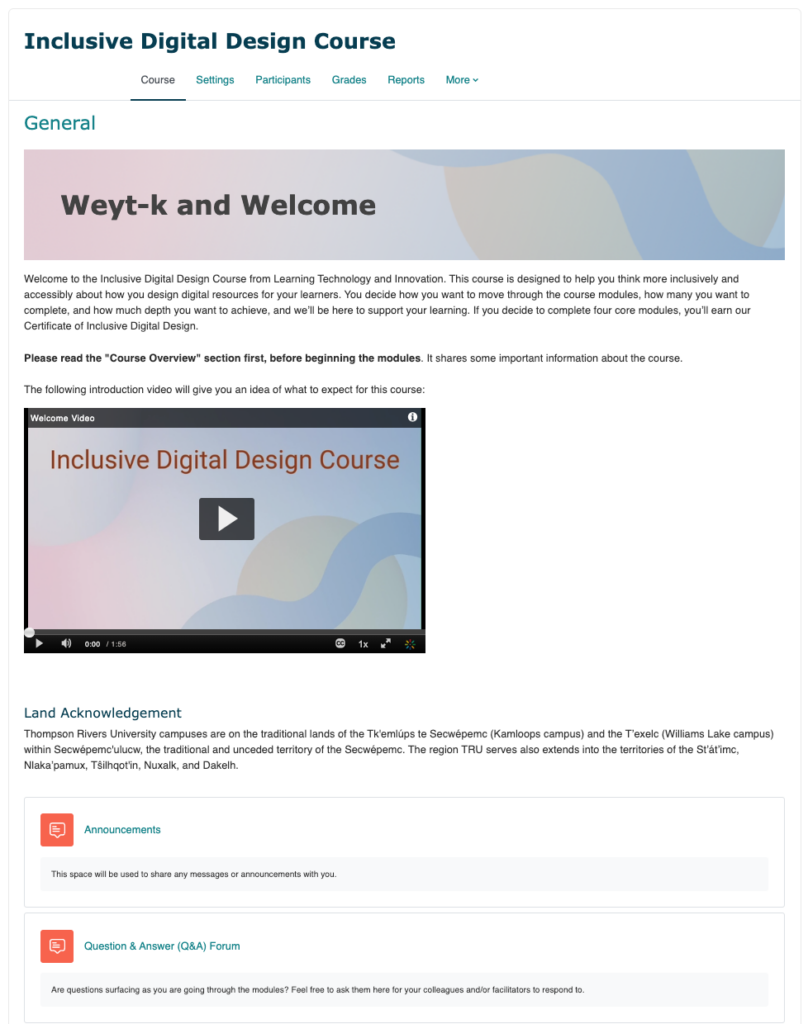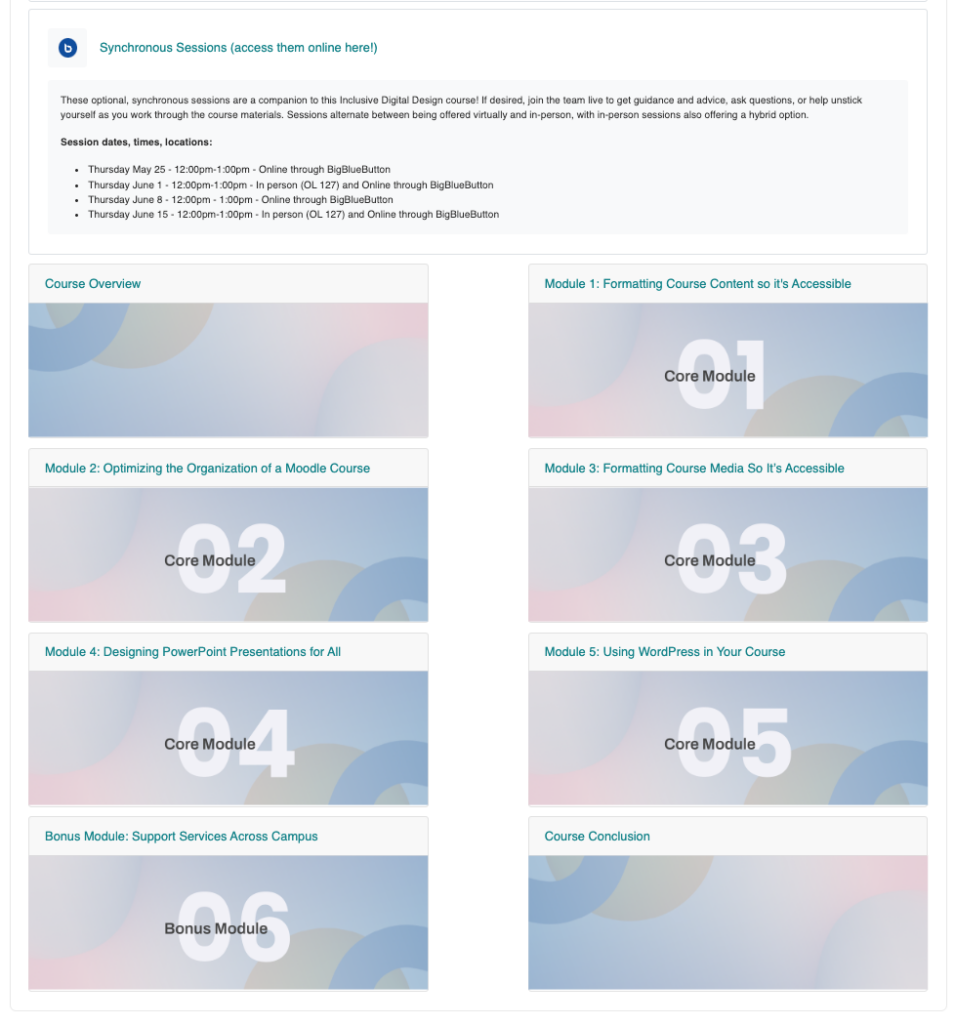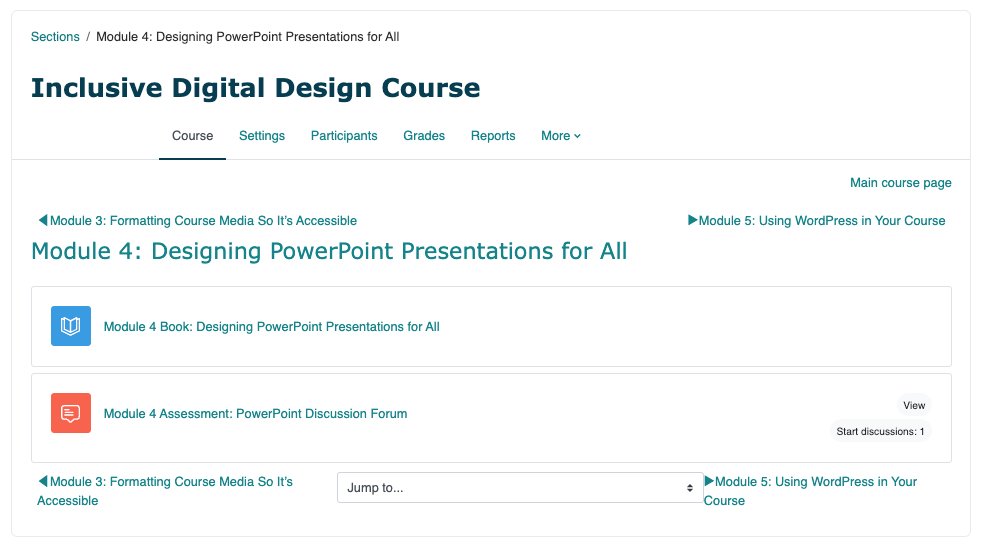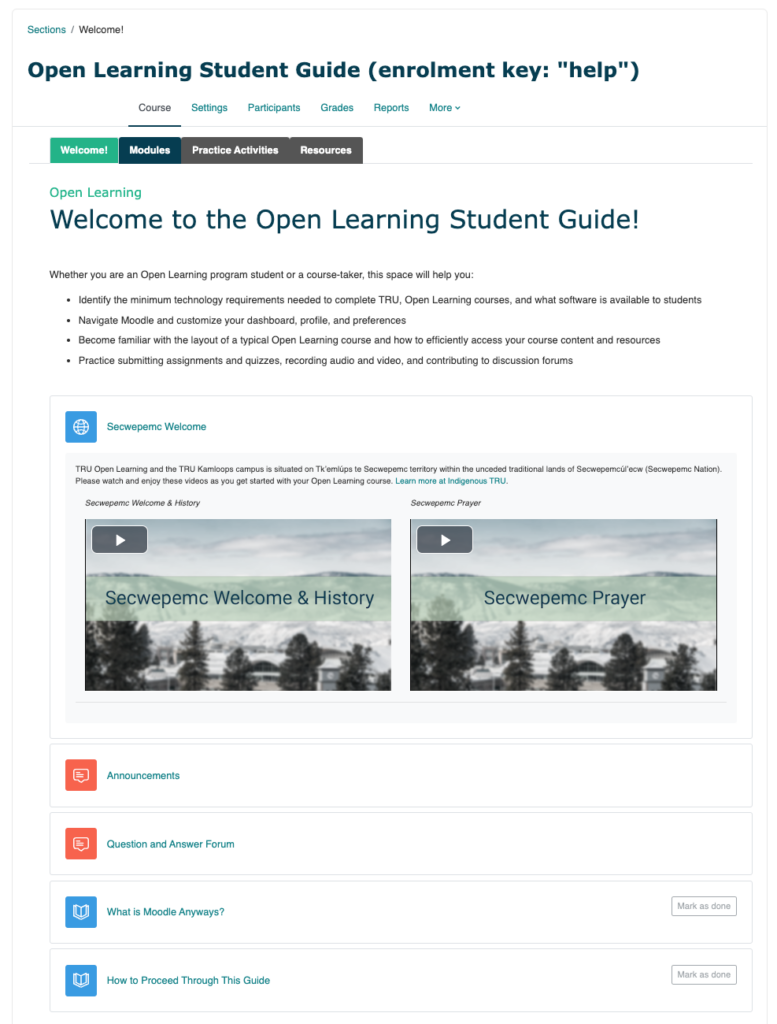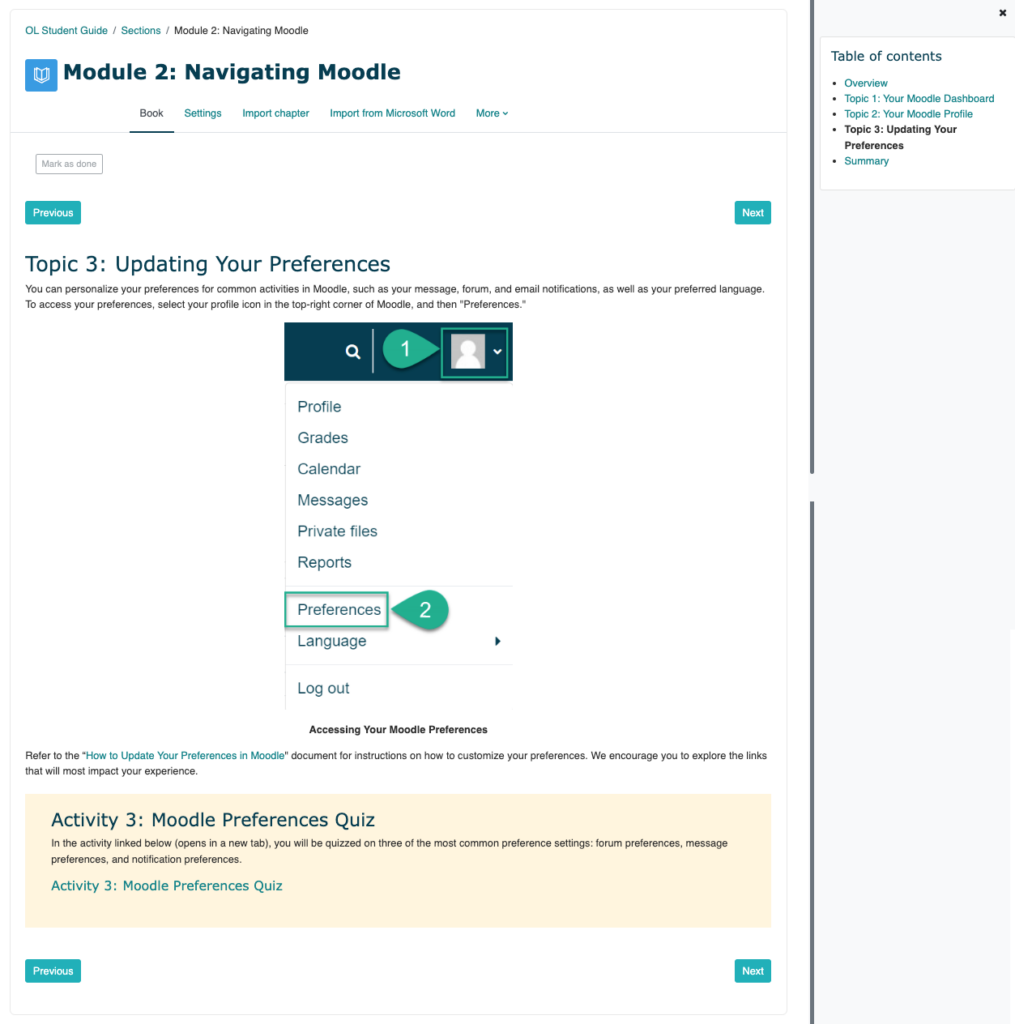Please use the tabs at the top of this page to navigate between projects.
Project 1: Inclusive Digital Design Course Development and Delivery
a) Having a background in instructional design, I led the LT&I team (Jamie Drozda, Brenna Clarke Gray, Brad Forsyth) through the program development process. Together, we turned the original vision of a “Multiple Modes of Access” offering into the “Inclusive Digital Design Course” for faculty and staff at TRU. This work was supported by graphic development from Nicole Singular (Graphic Designer, Open Learning) and introduction and promotional videos by Jon Fulton (Video Producer, Open Learning).
b) Through our day-to-day interactions with faculty, our team saw they were looking for support to make their classrooms more inclusive by better understanding learner needs. In response to this, our team developed a course with 6 modules that provides guidance around creating inclusive, accessible, and learner-centered course elements (course content, video, audio, PowerPoint slides) and learning platforms (Moodle, WordPress). Since LT&I noticed a trend of low enrolments for synchronous sessions, we decided an online asynchronous offering would provide greater flexibility and hopefully reach more people.
One challenge was deciding what platform to deliver this course out of. We wanted to make it as open as possible but didn’t have time to learn the entire LearnDash platform (a learning management system that runs off of WordPress). After considering our options, we decided to start small and offer the course for the first time through Moodle to just the TRU community. This felt more manageable and would allow us to gather feedback that could be integrated into the next offering for a wider audience.
c) The overall project management involved me setting meetings every 2 weeks, identifying and prioritizing agenda items each meeting, and reviewing the course as a whole at the end. Also, I created a schedule to help organize specific tasks that needed to be completed each month. I changed the colour of the table to grey when the tasks that month were completed to help us focus on the months to come.
The project development process for this course was a collaborative effort that involved 3 main components:
First, developing the Inclusive Digital Design Planning Map. This involved creating course learning outcomes and aligning the course with the provincial digital literacy competencies that are part of the B.C. Post-Secondary Digital Learning Strategy.
In this map, high-level planning maps were also created for each module and then used to guide the development of the specific module content in separate documents. Over time, the module planning evolved from Version 1 (the initial and broad brainstorming) to Version 2 (more specific and concise planning after discussions and collaboration). Please see the Module 1, Version 1 and 2 Comparison for an example.
Second, developing the Moodle course. This involved inputting the module content, enrolling participants, and designing the overall online learning experience. I designed the course landing page using graphics that Nicole Singular developed for our LT&I team. It features important course elements such as an introduction video, land acknowledgement, announcements board, link to synchronous sessions, and course modules. These elements help to welcome participants to the space, share necessary information, and provide avenues for support. To browse the Inclusive Digital Design Moodle Course, you may self-enrol into it using the enrolment key “inclusive” or you may view the screenshots below.
Third, marketing the course. This involved creating marketing messages for the LT&I workshops website, TRU connect, and an email to program Chairs.
d) I see this course as a way to increase campus capacity in developing learning experiences that consider inclusivity, accessibility, and learner-centeredness. This aligns with TRU values of inclusion, community-mindedness, and curiosity. Our ultimate goal is to create this as an open experience that reduces barriers to access which aligns with LT&I values. So, once we gather feedback from this offering, we will explore avenues for open access.
Also, the course exemplifies effective online course design practices such as consistent course and module structures and chunked module content within the books.
e) As of May 15, 2023, when the course opened, we had 62 participants registered. This number may increase as we will allow for continued enrollment until the course closes at the end of June. At that time, we will be able to see the depth to which participants engaged in the course and how many completed the modules to earn a certificate. We were pleased to see a high enrollment number and imagine it’s due to interest in the subject matter, offering the course asynchronously, and providing flexibility in terms of ways to participate.
f) As part of our support work with faculty members, the LT&I team encourages faculty to maximize accessibility and learner-centeredness in their courses. We modeled this in the course by integrating inclusive, accessible, and learner-centered features throughout to showcase how it can be built into learning. For example, we included assessments that offered choice, included multimedia elements for multiple ways to engage with content, and offered choice in modules to complete. Now, we have a resource that can support faculty with implementing these strategies in their own courses.
A lesson we learned was creating a bonus module, rather than it being one of the core modules. The original intent for the bonus module was to share support services across campus that faculty can connect students with. However, when developing it, it evolved into a more robust module. So, for future instances of this course, we would consider changing the “bonus optional module” into a core module option. This way, it would make the program less complicated and streamline certificate options.
g) The first instance of this course runs from May 15th-June 16th where we will gather feedback to learn about participant experiences. Then, our goal is to integrate that feedback and build this course on LearnDash after experimenting with the platform. LearnDash will give us the features we utilized in Moodle but in a platform that is open and accessible to people internal and external to TRU. Our intent is to run a second instance of this course through LearnDash in the 2023-2024 year that is open to people internal or external to TRU.
Screenshots
The following are screenshots of the course home page, module structure, and module content. Clicking the images will expand them and open them in a new tab.
